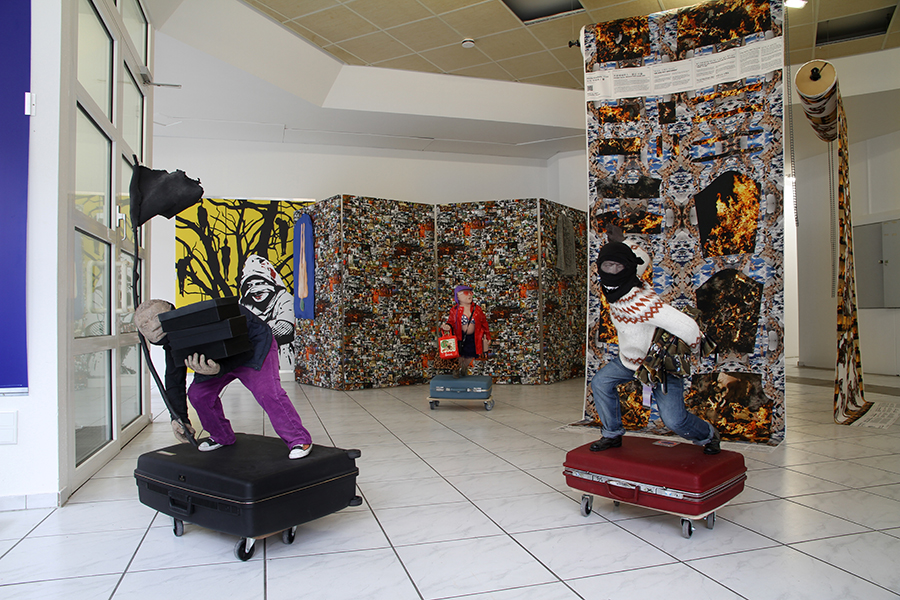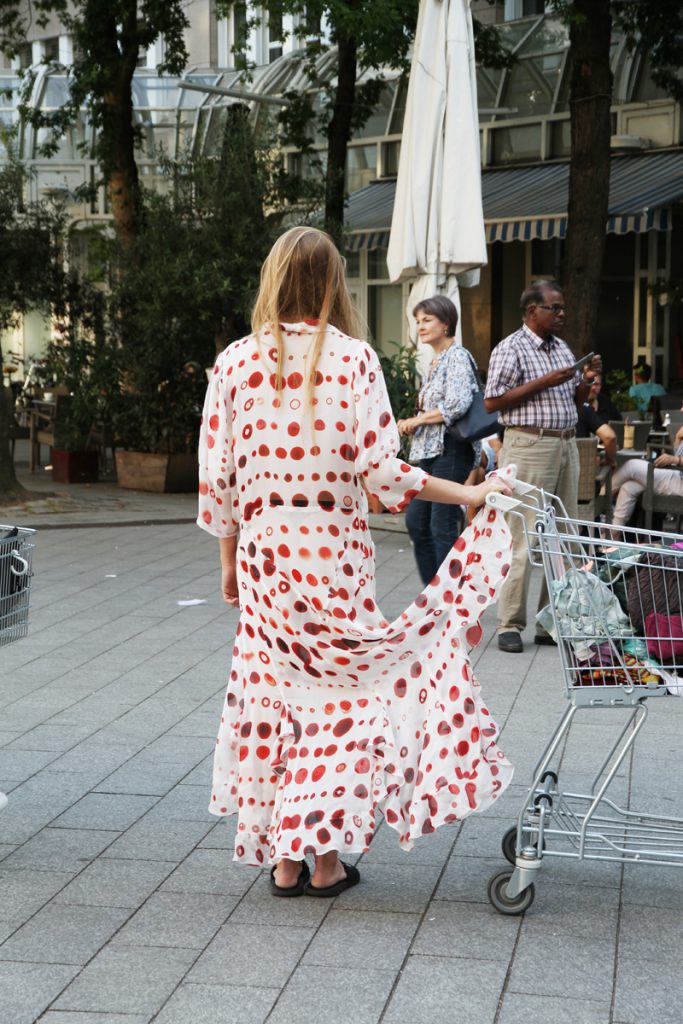With these first exhibits of the work New Silk Road, Ines Doujak associatively refers to the beginnings of the Silk Road during the Opium Wars. On a coat of arms created especially for the exhibition, she outlines the historical background of the Silk Road, from the first caravan to the current container route. Even today she identifies the trade itself, which became a transaction characterized by violence after the time of Christopher Columbus, as (infra-) structural violence that takes place along the development of the route. Thus Doujak politicizes the route, which ends in Duisburg, as another massive intervention in the already precarious conditions of global commodity production, in order to link the current works with earlier discourses. With the arrangement at the entrance with the sofa, which is from a Polish collection of colonial goods, she lays a trail to an enormous selection of highly complex collections, tapestries, and groups of figures, which—draped on, with, and around found objects, relics, and everyday devotional objects—transform the exhibition space into a delirious cabinet of curiosities. For example, the fabrics in the fire collection, on which images of burning textile factories and Promethean chains form an implausibly attractive and meaningful pattern, glide smoothly over the well-formed bodies of Western consumers as they try them on here. The fabrics thus problematize another thematic network in the body’s complex web of meaning between its designation, its clothing, and its economization.
With its unbridled desire for form, content, and ambivalence, the entire presentation not only emphasizes its proximity to the Wunderkammer, which, as the prototype of the museum, continues to connect the colonization of the world with the present day. Through the collection Doujak identifies the continuity of cultural and economic violence from history to the current program of the New Silk Road. The exuberant roundabout of forms, which ultimately renders impossible any moral evaluation of the discourses presented, requires a pleasant and necessary secularization of its political events that are so opulently and excitingly staged.
On this spectacular journey through the cultural history of the body, the here and now cannot be missed. It is not only the fact that the collections are for sale and secretly populate the urban space as wearable fashion, validating the work’s intrinsic claim that it is active and effective in the city’s currency. In addition to a major fashion show at Bertha-von-Suttner-Platz, Doujak emphasizes this claim through some of her looters, downsized rebels made of paper mâché who have already appropriated the postcolonial wares in the showroom. They suddenly appear in local stores around the train station, such as in the display at Olaf Backens’s flower shop, in the Afro barbershop Nasty Cut, or in Zigarren Linzbach, the smoking empire that identifies itself as a Wunderkammer, in order to subversively infiltrate the city.


























